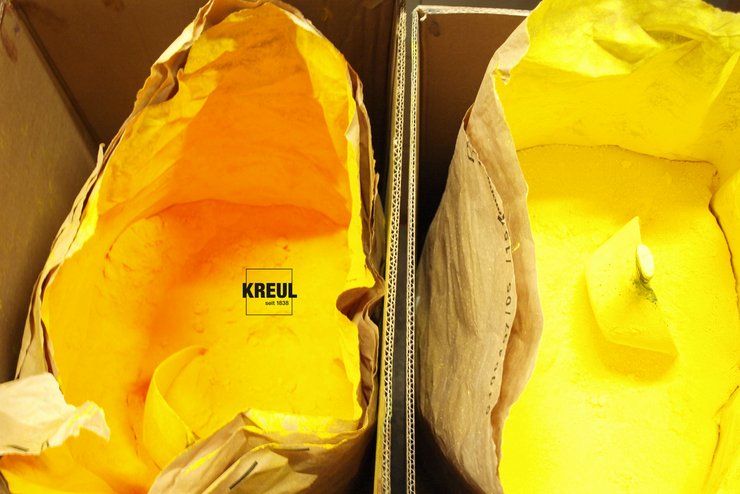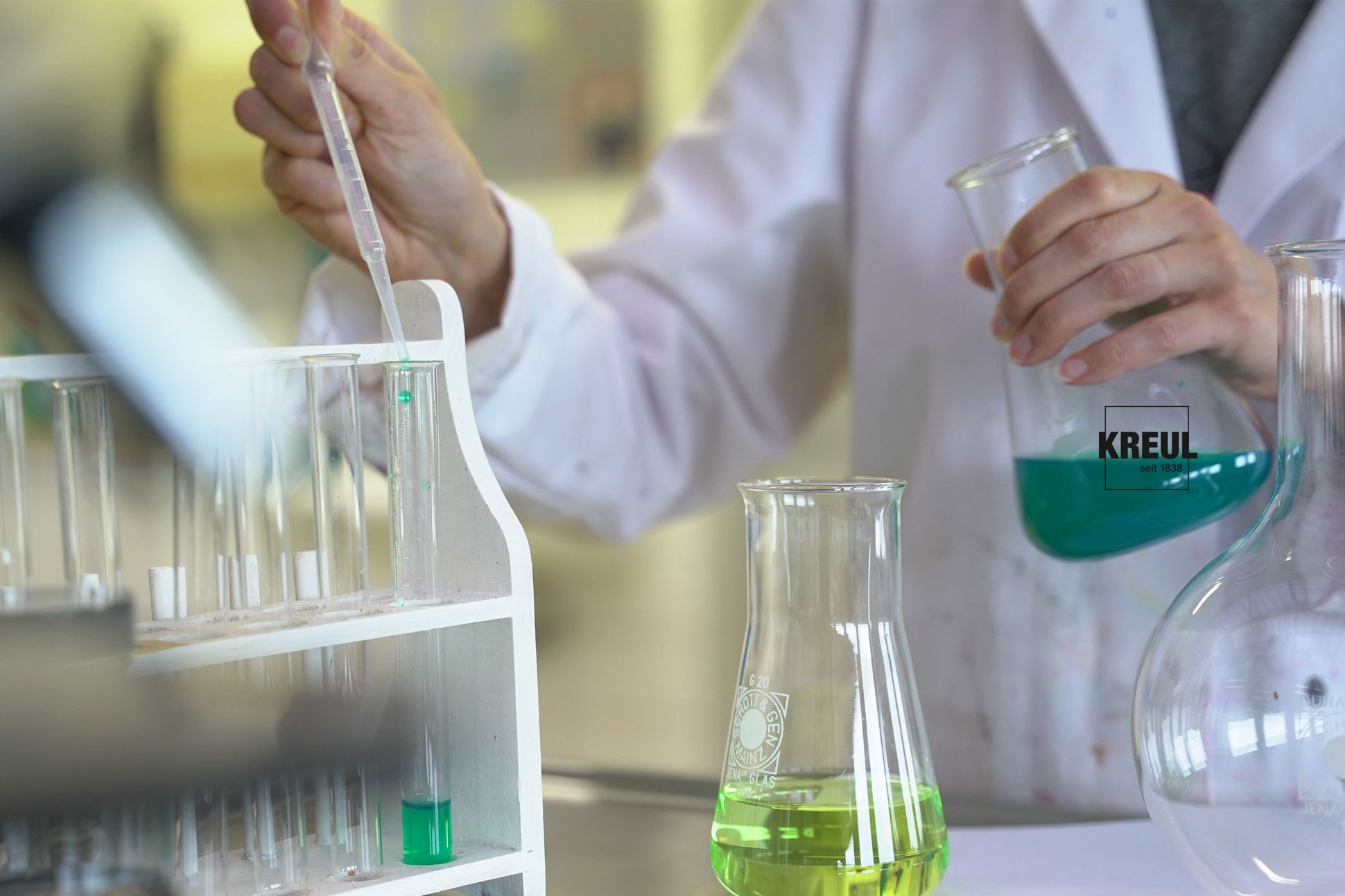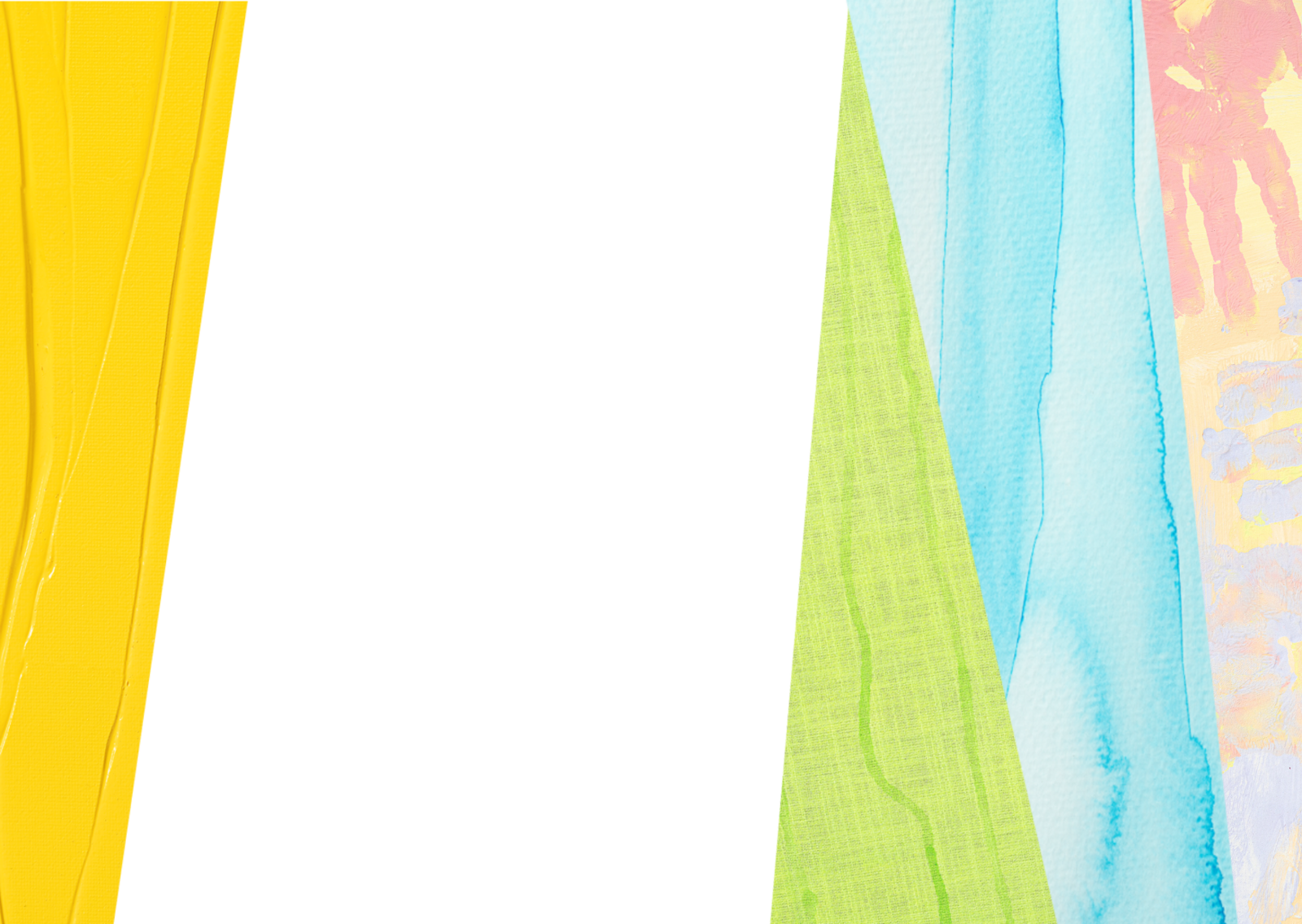
What makes paints "colourful"?
10/02/2023 |- SOLO GOYA Acrylic
- KREUL Triton Acrylic Liquid
- Ideen für Künstler

Dyes: soluble colourants
Dyes are defined as soluble colour molecules that are absorbed by a material after they have been applied to it. Just like when you stir salt into water, they dissolve. For this reason, dyes are used in coloured inks. Dyes give intense and brilliant colour. For example, the SOLO GOYA Aqua Paint Marker is very colour-intensive.
Dyes have long been used for colouring. For centuries, they were obtained from plants and animal substances. For instance, red was made from madder root or from cochineal bugs. Extracting natural dyes was a painstaking business. In the mid-19th century, it became possible to make them in a test tube.
Today, a wide range of synthetically manufactured dyes is available. But, with the drive towards greater sustainability, natural vegetable dyes are back in demand. For instance, the KREUL Acrylic Marker medium Natural Pigments Curcuma gets ist colour from the root of the curcuma plant (curcuma longa root extract). Dyes have a small particle size. That is why they can’t be use to make opaque shades. The curcuma dye is transparent for this reason.

Pigments: non-soluble particles for colouring
A pigment is a particle of a colouring substance that is not soluble. It therefore needs a binder to get the pigments to stick to the painting surface. For KREUL acrylic paints, for instance, we use polymer dispersions. Pigments can be of natural origin or manufactured in the laboratory.
The first paints humans used to paint caves in prehistoric times consisted of earth pigments. Earths, minerals, rocks as well as precious and semi-precious stones delivered natural pigments for centuries. These consist of compounds of metals like iron, calcium, barium, and manganese with oxygen and other non-metals. The price of many pigments used to be practically exorbitant. For example, semi-precious lapis lazuli supplied the pigment for ultramarine blue, making it a luxury colour. Its price was so expensive that the colour could only be used seldom and sparingly, mostly only for the Virgin Mary’s robes. This changed only at the beginning of the 19th century when it became possible to make synthetic ultramarine pigments.
Pigments were also extracted from vegetable and animal substances. For a long time, the pigment for purple was obtained from snails. KREUL uses mainly synthetic pigments. They have excellent properties, and no animal has to suffer for us to make them. They have a reliable, consistent quality. Natural pigments on the other hand are never the same.
For our formulas, the colour index number of a pigment is important. This number can be used to identify the pigment. For instance, in chemical terms, ultramarine blue pigment consists of a sodium-aluminium silicate. For the production of our SOLO GOYA Triton Acrylic Ultramarine Blue paint, we always use the pigment with the name Pigment Blue 29.
Whether a pigment is opaque or transparent depends on how coarse or fine it is. For instance, SOLO GOYA Triton Acrylic Citron is transparent, SOLO GOYA Triton Acrylic Cobalt Blue is opaque. So that you can see when you buy a paint whether it is transparent, semi-transparent, semi-opaque or opaque, we have labelled the paint containers accordingly.

What does light-fast mean?
Why aren’t there any windows in most art museums? Because of the sunlight. Many old masterpieces are sensitive to light and can fade in the sun. That is why it is specified on artists‘ paints how resistant a paint is to the effect of light. The less a colour fades when exposed to light, the higher its light fastness. In paint production, we rate this value from 1 (very low) to 8 (= maximum light fastness). For our yellow colours for SOLO GOYA Acrylic we use, for example, Pigment Yellow 1 and Pigment Yellow 3. These exhibit high light fastness. On a scale from 1 to 8, both reach 7.
You can see the light fastness on the label of our artists‘ acrylic paints or on the container. For simplification, we display three crosses for the highest light fastness, two crosses for good light fastness and 1 cross indicating low light fastness.

The meaning of single-pigment paints
Artists like using single-pigment paints as the colours are particularly brilliant. Single-pigment paints mean that only one pigment is responsible for giving the paint its colour. In the KREUL paint range, for instance, SOLO GOYA Acrylic Genuine Red and SOLO GOYA Triton Acrylic Ultramarine Blue consist of one single pigment.
In literature and in painting courses, the advice is often to mix colours only from single-pigment paints. For the following reason: with each mixing, the pigments used are added up. If you mix too many pigments, then the colour shades you get appear greyish and dirty. That is why KREUL acrylic paints only contain as many pigments as absolutely necessary.
But more than one pigment is not automatically bad. With the addition of further pigments, we can improve the properties of a colour. For instance, a transparent yellow pigment can be mixed with titanium dioxide or inorganic oxide pigments to make it more opaque. The yellow colour that would tend to be transparent because of the pigment would then appear more opaque.


